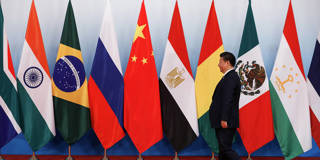Since China, Russia, India, and Brazil held the first BRIC summit in 2009, South Africa has been added to the club, and China's influence on the world stage and within the group has grown immensely. But even as China continues to set the group's agenda, the other BRICS have an important role to play in reforming the global order.
JOHANNESBURG – This week, South Africa is hosting the tenth annual gathering of the BRICS (Brazil, Russia, India, China, and South Africa). When the first BRIC summit was held in 2009 (South Africa was added in 2010), the world was in the throes of a financial crisis of the developed world’s making, and the increasingly dynamic BRIC bloc represented the future. By coming together, these countries had the potential to provide a geopolitical counterweight to the West.

JOHANNESBURG – This week, South Africa is hosting the tenth annual gathering of the BRICS (Brazil, Russia, India, China, and South Africa). When the first BRIC summit was held in 2009 (South Africa was added in 2010), the world was in the throes of a financial crisis of the developed world’s making, and the increasingly dynamic BRIC bloc represented the future. By coming together, these countries had the potential to provide a geopolitical counterweight to the West.